Creating and Tracking Customer Deposits.
Create a customer deposits product and add it to the sales order twice with one having the positive value of the deposit scheduled and the other have the negative value backordered. Invoice the scheduled line and then schedule the backordered after.
Customer Deposits:
In some industries, it's very common for a customer to have to put a deposit against an order. You can so by creating a line item on your order called "Deposit" and then applying a payment against it.
This article is about handling deposits, e.g. payments that need to be treated as a liability until earned. If you need to take a payment that is not to be treated as a deposit, take a look at the Enter Payment window.
Steps to Track Customer Deposits:
- In QuickBooks, create a new GL account with the account type of Other Current Liability since these will be deposits that have not been applied to a particular invoice yet.

- After a sync, you can create a new Product Class in Acctivate. This product class will use the Customer Deposit GL account we just created.
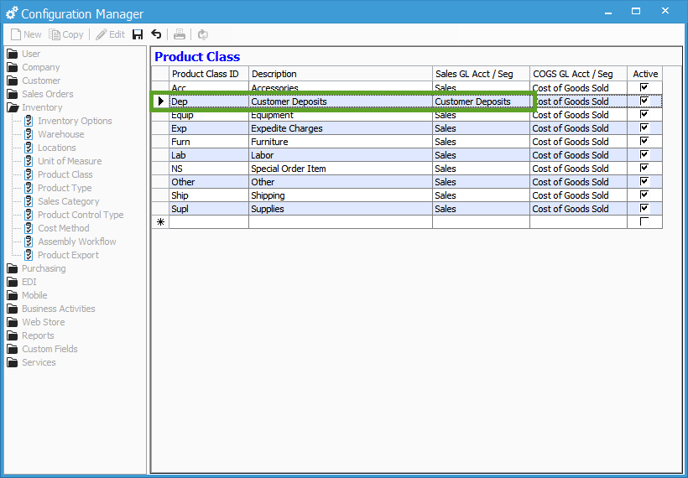
- Next create the product for this Deposit. The item type should be Other Charge and the Product Class should be the one just created (In this case "Customer Deposits"). You'll also want to ensure that the cost method is set to None. The tax code will be your non taxable tax code.
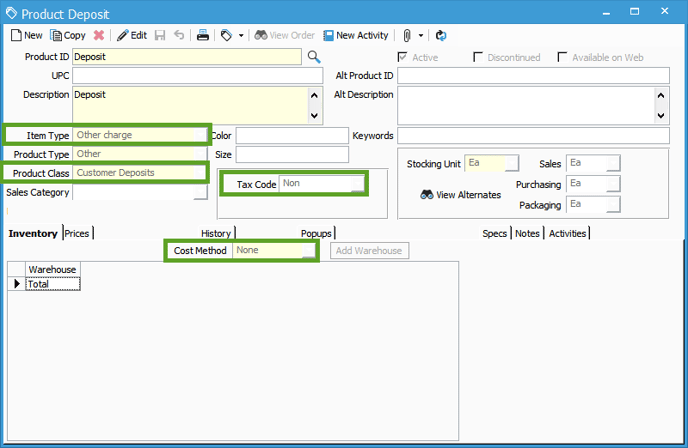
- Create the sales order for the items. At the end of the sales order add your deposit item for the amount of the customer's deposit. Add the deposit again with a negative deposit amount. Set the scheduled quantity to be "0" for all the items except the deposit item. Our first invoice should only include the positive amount deposit item.
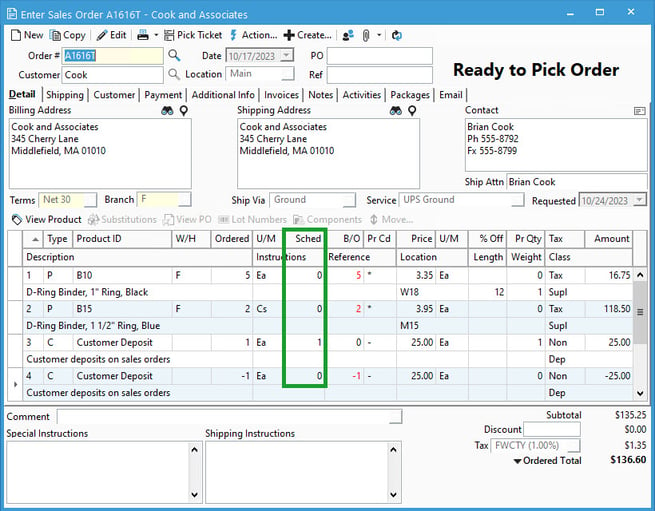
- Next, you will click Create Invoice or Action > Create Invoice. This will open the invoice window where you will record the deposit payment info. Acctivate will create an invoice for the deposit amount, in this case $25, and apply the payment to it. Both the invoice and payment will sync over into QuickBooks.
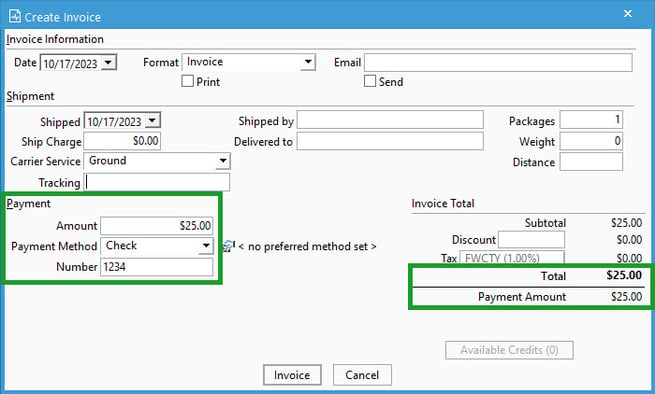
- In QuickBooks, the customer will have a zero dollar balance, however there will be a $25 entry in the Customer Deposits account. This amount reflects that you have $25 of deposits money which has not been used.
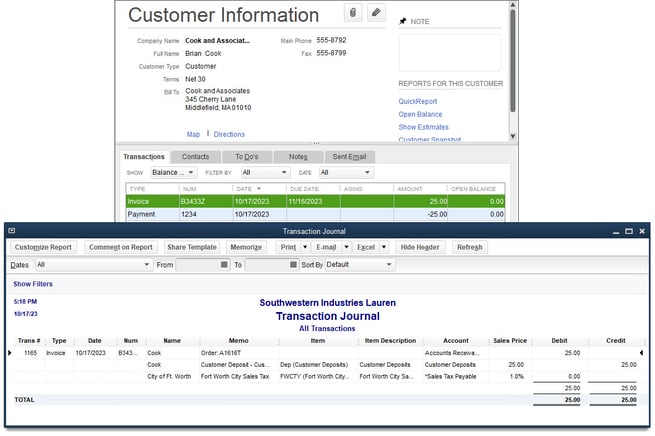
- After creating the first invoice in Acctivate, you will Schedule Order which includes the negative deposit amount. This will reduce the balance of the order by the deposit amount. When you create your item invoice, the customer will see the deposit being deducted which leaves a balance due of $111.60.

- After creating the invoice for the balance due and syncing it to QuickBooks, the customer balance will reflect the amount due and the Customer Deposits account will reflect zero dollars, indicating that we've use all of the customer deposit on hand.
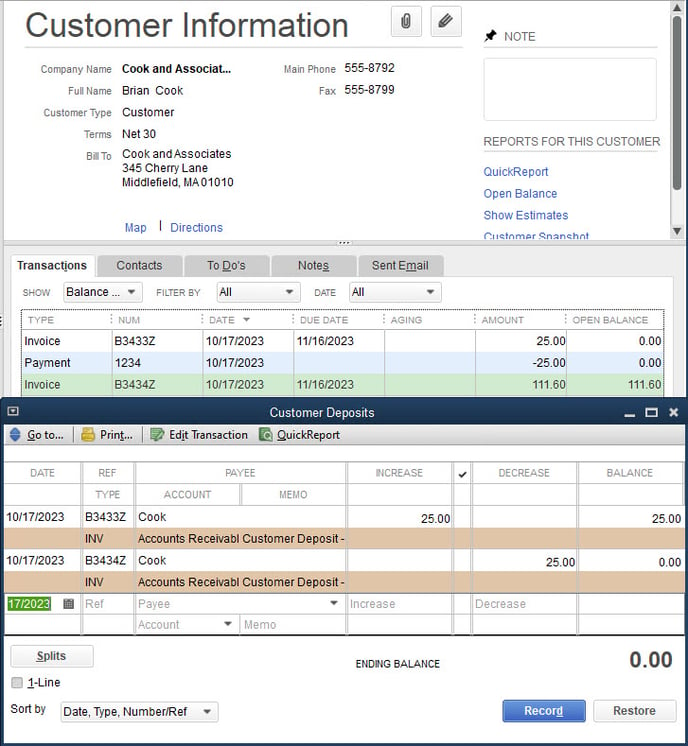
Accounting Impact:
First Invoice
| Accounts Receivable | $25 | |
| Other Current Liability - Customer Deposits | $25 | |
| Customer Sales Invoice with initial Deposit | ||
| Checking Account | $25 | |
| Accounts Receivable | $25 | |
| Deposit Payment synced with initial Invoice | ||
Second Invoice
| Accounts Receivable | $111.60 | |
| Sales - Widgets | $16.75 | |
| Sales - Gadgets | $118.50 | |
| Other Current Liability - Customer Deposits | $25 | |
| Sales Tax Payable | $1.35 | |
| Customer Sales Invoice for remainder of invoice | ||
Note: An alternative method would be to apply the customer payment created in QuickBooks to the sales order at the time of invoicing.